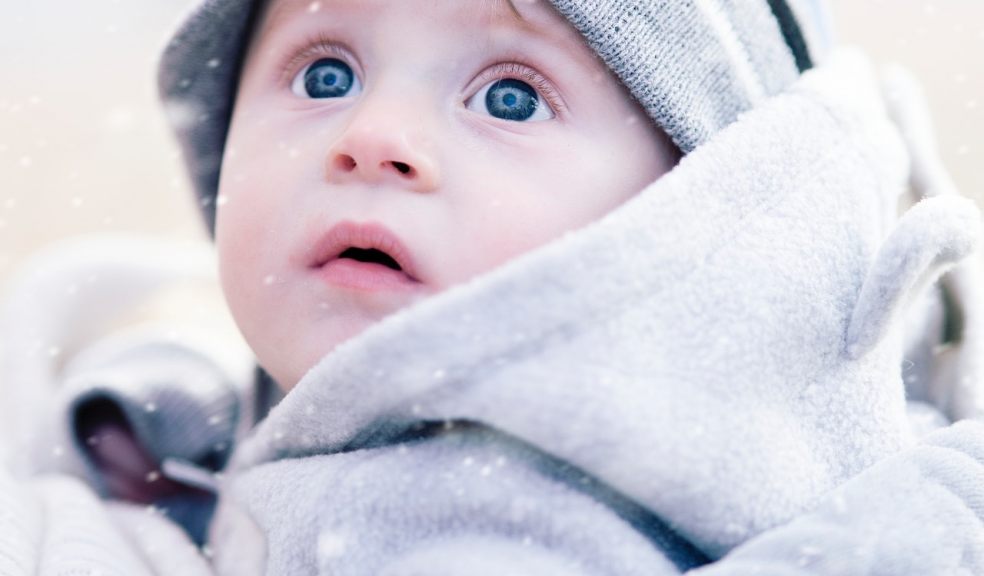
How to Dress Your Baby for the Cold
There's no denying it. Babies are very fragile and finicky beings. Care must be taken to ensure your child is comfortable and safe at all times by controlling the environment around them. One of the most significant ways a parent can accomplish this task is by carefully selecting how they dress them for the world around them. Winter can provide a lot of challenges when it comes to finding apparel for your little bundle of joy. You need to find a good mixture of clothes they like, clothes that are comfortable for them, as well as clothes that will keep them warm and safe should they ever need to be taken outside of the house.
To help accomplish these goals, these tips should be followed:
Use layers.
While very obvious, properly layering your baby is probably the most valuable thing you can do to make both your day and your baby's day much easier. If you layer your baby properly with inside, outside, and changing time in mind, you'll make your life much simpler. You should begin with a onesie as their base layer and then go from there, adding as many other layers that you feel necessary. The best layering jobs involve clothing that covers more than one part of the body at a time (such as a onesie) but is still easy to manipulate and remove if necessary. Try to avoid too many items that need to be put over a baby's head to get them on.
Understand how the clothes change your concerns.
Big winter coats, snow pants, as well as beanie caps take up a lot of space, effectively making your baby a larger object to transport and care for. When strapping your baby into a car seat or stroller, for instance, there's a good chance you'll have to adjust the straps on these items for your baby to be adequately secured. Some materials or designs of snowsuits make straps get loose no matter how you configure them, so you'll need another option if you insist on going by car.
Take care of your baby's extremities.
When the body gets cold, heat tends to move away from the extremities and into the core of the body in a bid to use energy in a way most efficient for overall survival. That means you'll need to put effort into keeping your baby's little fingers and toes properly insulated during the winter months. Mittens are an essential aspect of this, but the importance of a quality hat and maybe even some thick socks can't be understated. Make sure the hat you purchase covers the ears as well. Otherwise, you'll be leaving your baby vulnerable to strong winds.
Use the plus-one method.
Appraising just how cold it is and what your baby needs isn't always a simple task. One rule of thumb you can use is to first assess how many layers you'd need to be optimally comfortable, then add one extra layer, and that's how many layers your baby will require. Places like Bitsy Bug Boutique have a wide array of onesies that function great as that extra one base layer. A warm blanket can be a substitute for a coat if your baby is going to be in a stroller or car seat.
Always be aware of your baby's level of protection.
Your warm clothing options will be essential. There's no leaving the house without them in colder weather. Once you make it to a warmer destination, though, you should be making sure not to overheat your baby. This is where proper layering comes into play. If you can quickly and easily remove layers from your baby, you can ensure that they stay comfortable. It's equally difficult for your baby to cool off as it is for them to heat up. Understand that your baby's time spent in the worst of the cold will probably be the smallest chunk of their day. Plan their outfit with some pragmatism in mind, so you won't treat regulating their body temperature as a chore that might go forgotten.
Test your outfits.
There are a few ways to see if your outfits are getting the job done. Your child can't communicate with you verbally, yet there are still signs to be looking for. For instance, feel your baby's toes and belly immediately after coming in from the cold. The belly should be warm, and the toes should be neither particularly warm nor particularly cold. If both of these places are warm, it means you're overdressing your baby. If your baby's belly is cold, it means your baby can't warm himself or herself up on their own and needs the help of an extra layer or so. By doing these types of tests, you can better understand what your baby actually needs to remain as comfortable as can be.
Don't forget bedtime.
As important as it is to keep your baby warm during their waking hours, you shouldn't neglect their sleeping time either. If you had to choose between risking your baby being slightly too cold or slightly too warm while they sleep, it's better to err on the side of slightly too cold. A sleeper suit that goes from the feet all the way to the neck is an excellent choice for winter sleep time, and then put an appropriately sized swaddling blanket around them. If you check your baby's neck during the night and sweat is present, that's a clear sign you're going a little overboard.
Conclusion
Like all things that have to do with babies, keeping them properly dressed during the cold is a very intensive process that requires a lot of proper planning to pull off. Unlike adults that can deal with minor discomfort for a relatively long amount of time, babies are at a much higher risk of injury or complication from the cold. They also have a lot less padding and warming power available to them. You'll have to fill in the gaps with proper clothing that's both warm and comfortable enough for them to wear.

















